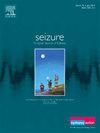Drug-refractory epilepsy due to a novel CLN5 mutation: A report of three patients from an Indian family
IF 2.7
3区 医学
Q2 CLINICAL NEUROLOGY
引用次数: 0
Abstract
Introduction
Neuronal Ceroid Lipofuscinosis (NCL) are a group of lysosomal storage disorders characterised by progressive neurodegeneration caused by an accumulation of ceroid lipopigment in lysosomes of neurons and other cell types. Adult-onset NCL (Kufs disease) differs from childhood forms by its later onset and preserved vision. Type A (Kufs A) presents as progressive myoclonus epilepsy (PME), while Type B (Kufs B) manifests as dementia with motor involvement. Both subtypes have distinct causative genes.
Methods
We have described 3 siblings with genetically confirmed novel pathogenic CLN5 subtype who presented with developmental regression, drug-refractory myoclonic epilepsy, and dementia (Kufs A).
Results
We have presented 3 siblings with adult onset NCL with Kufs A (not Kufs B) phenotype, which has been rarely documented.
Conclusion
Genotypic-phenotypic variations are increasingly being reported for NCL. We have described three patients from a family with CLN5 subtype who had prominent drug refractory myoclonic epilepsy, which is extremely rare.
一种新的CLN5突变引起的药物难治性癫痫:来自一个印度家庭的三例患者的报告。
简介神经细胞钙样脂褐质沉着病(NCL)是一组溶酶体储积症,其特征是神经细胞和其他类型细胞的溶酶体中钙样脂色素的积累导致进行性神经变性。成人型 NCL(Kufs 病)与儿童型 NCL(Kufs 病)的不同之处在于发病较晚且视力得以保留。A 型(Kufs A)表现为进行性肌阵挛癫痫(PME),而 B 型(Kufs B)则表现为运动受累性痴呆。这两种亚型都有不同的致病基因:方法:我们描述了经基因证实的新型致病性 CLN5 亚型的 3 对兄妹,他们表现为发育倒退、药物难治性肌阵挛性癫痫和痴呆(Kufs A):结果:我们发现了3对成人发病的NCL兄弟姐妹,他们的表型为Kufs A(而非Kufs B),这在临床上很少见:结论:关于 NCL 基因型-表型变异的报道越来越多。我们描述了一个家族中的三名 CLN5 亚型患者,他们都有突出的药物难治性肌阵挛性癫痫,这种情况极为罕见。
本文章由计算机程序翻译,如有差异,请以英文原文为准。
求助全文
约1分钟内获得全文
求助全文
来源期刊

Seizure-European Journal of Epilepsy
医学-临床神经学
CiteScore
5.60
自引率
6.70%
发文量
231
审稿时长
34 days
期刊介绍:
Seizure - European Journal of Epilepsy is an international journal owned by Epilepsy Action (the largest member led epilepsy organisation in the UK). It provides a forum for papers on all topics related to epilepsy and seizure disorders.
 求助内容:
求助内容: 应助结果提醒方式:
应助结果提醒方式:


